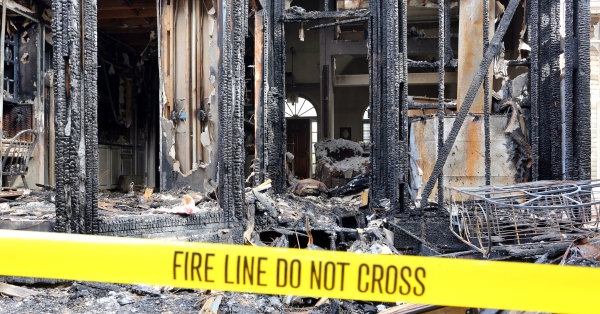After a severe storm or weather event, the importance of a thorough home inspection cannot be overstated. This vital step ensures maximum safety while laying a secure foundation for insurance claims and necessary repairs. Let’s walk through how to inspect your home for damage—plus when to call in the professionals.
Prioritize Safety First
Before you look for any damage, prioritize safety first. If you’ve evacuated, wait for the official announcement that it’s safe to return. If you sheltered in place, ensure the storm has passed before venturing outside. The landscape around you might look different, with hazards like power line malfunctions, weakened structures, or flood waters.
When it’s safe to re-enter, equip yourself with the proper safety clothes and gear. Sturdy shoes protect your feet from sharp debris, while gloves shield your hands. A reliable flashlight is essential for peering into dark corners, and don’t forget a hard hat to protect yourself from falling debris. If a situation feels too precarious, trust your instincts and seek professional assistance for all storm damage restoration activities.
Do an Exterior Inspection
Begin your inspection from the outside, working methodically around the whole perimeter. Start with the roof, as this is your home’s first line of defense against the elements and often bears the brunt of storm damage. Look for missing, loose, or broken shingles. If you have a metal roof, check for any dents or punctures.
If the roof has a chimney, inspect it for cracks or missing bricks. Then, turn your attention to the siding and windows. Storm winds can tear off siding or blow debris into it, leaving cracks, holes, or dents behind. Windows are particularly vulnerable—check for broken glass or compromised frames and seals, which can cause future leaks.
Finally, examine your home’s foundation. New cracks or shifts can indicate serious structural issues. If your area experienced flooding, look for signs of potential water damage around the base of your home. Even minor foundational damage can lead to significant problems over time, so pay close attention to this crucial house component.
Move Onto the Interior
Once you’ve completed the exterior survey, transition inside. Water damage is one of the most common and costly issues after a storm. Look for water stains on the ceilings, walls, and floors. Don’t forget your attic, too—it’s often the first place to show signs of a roof leak. Dampness in carpets or warping in wood floors can also indicate water intrusion.
The electrical system also needs a thorough inspection, as the reactions between water and electricity can be life-threatening. Look for frayed wires, sparks, burning smells, or tripped circuit breakers. While testing electrical outlets yourself is tempting, it’s best to call a professional electrician to handle the situation safely and effectively.
Structural damage is also a severe issue that requires immediate attention. Look for any new cracks in the walls. Check if the doors and windows can close securely—if not, this can indicate a shift in your home’s structure. Warped ceilings and walls are also red flags that you’ll need an expert remediation service to address as soon as possible.
Document the Damage
Maintain thorough documentation of all the post-storm damage for insurance claims and repair planning. Here’s how to create a comprehensive record:
- Take clear photos of all damage. Capture wide shots to show the context and close-up shots to illustrate the specific damage.
- Film a video walk-through with clear narration to explain what you’re seeing.
- Create a written inventory of all items that need repair, noting the date of purchase and the estimated value of each item.
- Save all receipts for any immediate repairs or temporary accommodations.
Seek Professional Help
While homeowners can conduct the essential initial inspections, more in-depth issues require a professional evaluation. If you suspect damage to your home’s structure, consult a licensed contractor or structural engineer.
For electrical problems, contact a licensed electrician, and if you notice extensive water damage, roof issues, or indications of potential mold growth, call in professional remediators to restore your home to its pre-storm condition.
When in doubt, err on the side of caution and seek expert advice. Professionals have the tools and knowledge to resolve issues that might not be visible to an untrained eye.
Handle Insurance Claims
Filing an insurance claim can be overwhelming, but starting this process is vital. Contact your insurer as soon as possible to report the damage. Give them all your collected documentation, including photos, videos, and inventory lists.
When working with insurance adjusters, be present during the inspection if possible. Show them all the areas of damage, and ask questions if something about their evaluation isn’t clear. Before the adjuster leaves, request a copy of their full report so you can review it at length and follow up on any discrepancies.
Keep a log of all communications with the insurance company. Note the specific dates, agent names, and summaries of each conversation. These records will be invaluable should any disputes arise during the claims process.
Protect Your Home and Family After a Storm
The impact of severe weather events like tropical storms can often be insidious. What might seem like minor damage at the time can lead to serious issues in the long run. Fortunately, with a careful inspection and proactive documentation, you’ll set the tone for a smoother recovery.
Remain safe, be thorough, and seek professional help. Your home is valuable, so keep it secure and comfortable—no matter which storms blow through.






